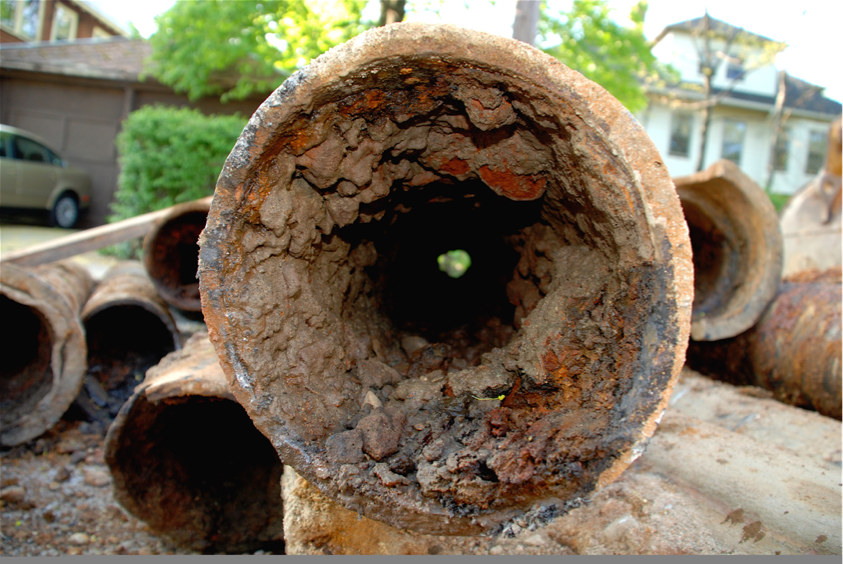A lot can happen from the waterworks to the tap
German drinking water is the most controlled foodstuff. The German Drinking Water Ordinance (TrinkwV) contains binding limits for about 50 possible pollutants, for which the drinking water is permanently checked in Germany’s approximately 6,000 waterworks and treated accordingly.
But even if the water supplier feeds the tap water into the network in perfect condition, it is exposed to numerous possibilities of renewed contamination on its long journey from the waterworks through kilometers of pipes to the tap at home. The distance between the waterworks and the household can be 50 kilometers or more. More than 99% of the population in Germany is connected to the public drinking water network.
The majority of public distribution networks in Germany are aging, and the more than 530,000 kilometers of pipelines in many places are old and in need of modernization. Deposits and corrosion in the pipe network can contaminate drinking water that has already been treated on its way to the consumer. On its way, the water comes into contact with a large number of different materials and components. These can release substances into the drinking water that change the odor or taste of the drinking water, have a health relevance or lead to a proliferation of microorganisms and thus possibly also of pathogens.
In addition, more and more pollutants are entering the water cycle due to industry, agriculture, environmental influences and also us humans, which are not regulated and tested at all by the TrinkwV. Thus, there are a large number of other ingredients that are not monitored, including fertilizers and pesticides, asbestos, microplastics, residues of pharmaceuticals, hormones, plasticizers, and viruses or heavy metals. However, conventional residential filters only remove larger dirt particles (such as sand) from the water.
Additional impurities can also occur on the last few meters within one’s own building. Especially in old buildings, old water pipes can pose a high risk to water quality and thus to health. Dissolved heavy metals from old copper or even lead water pipes or germs from dead legs and the biofilm contained in pipes can greatly reduce drinking water quality. If the water stagnates in the pipes, it heats up and becomes contaminated. Temperature and nutrient supply are crucial for the reproduction of microorganisms. The longer water stands in the pipe, the more substances it absorbs from pipes and fittings. In addition to pathogens, toxic chemical substances can also play a role in drinking water.
Legionella and other bacteria may find excellent conditions to multiply here. The danger is not only in the hot water pipe, but especially in old buildings through a poorly insulated cold water network that is heated by a structurally nearby hot water pipe.
The situation will worsen in the coming years: Urbanization and climate change, combined with aging water infrastructure, threaten drinking water quality in our country as well. More and more people are therefore becoming aware of the importance of clean drinking water. Therefore, we recommend a filter for drinking water either at the access point from the public supply network to the house or directly at the point of tapping, just before it is consumed.
Seccua offers drinking water filters as an under-sink solution (Seccua MK7) or for the entire household (Seccua Urspring BeWell and Biofilter). Seccua filters work with high-tech membranes analogous to those used in medical technology and thus act practically like a firewall, reliably keeping out pathogens and effectively reducing pollutants. Even previously contaminated water is in perfect condition afterward.
